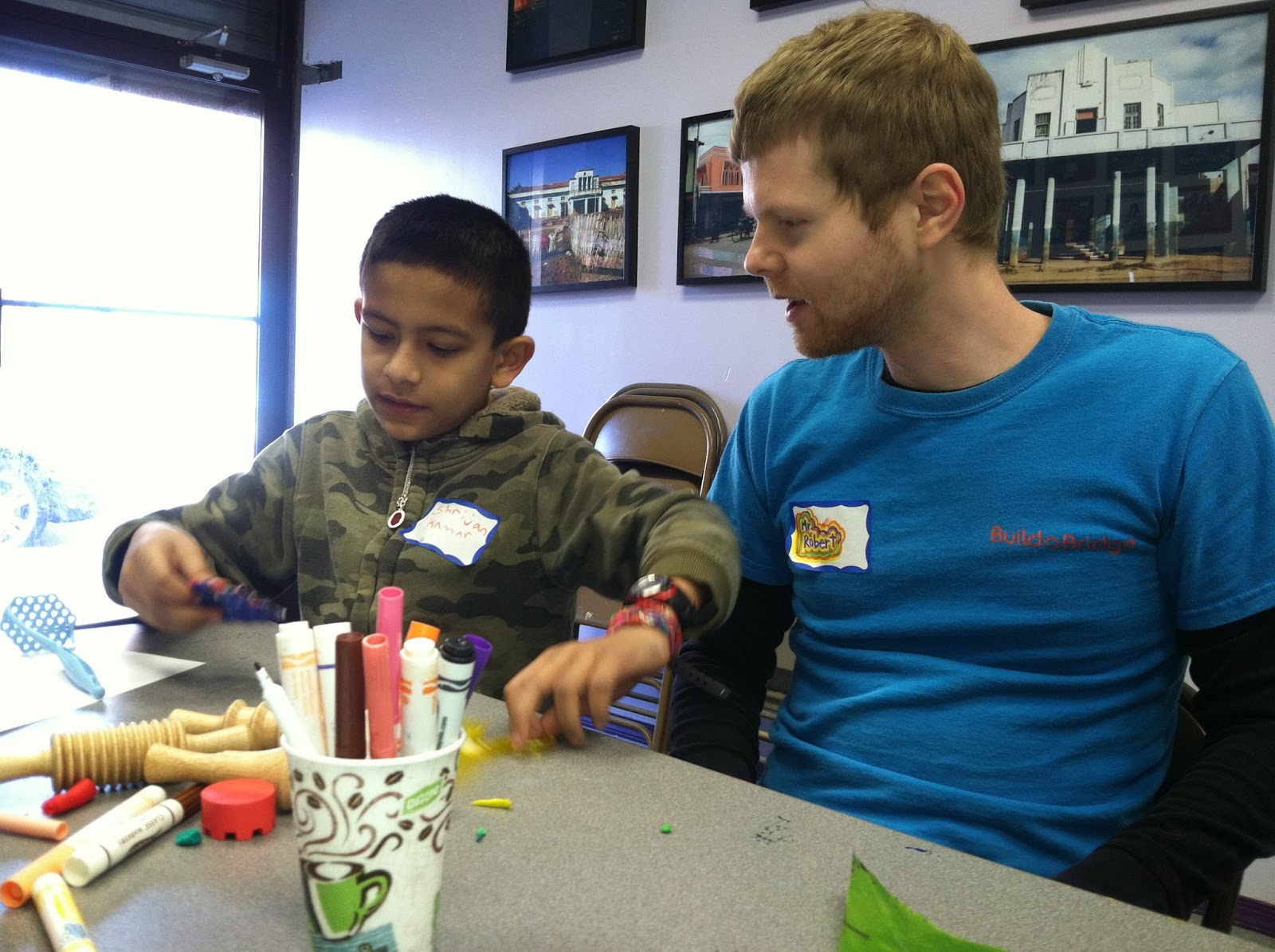Every artist is familiar with the paralysis brought on by the challenge of a blank canvas; the smooth, white, pristine expanse daring you to put down your first mark. Today, our group of Bhutanese Elders may have experienced this for the first time. They faced it, fought with it and conquered it.

Week after week, I am struck and inspired by the smiles and spiritual calm of our group members who have endured and thrived through so much hardship in their lives. While sharing their stories through drawn symbols and words, they have given us hints as to what underlies their ability to live in gratitude and grace. This strength and character, however, did not make them immune to the fear of the seemingly small challenge before them. When we announced that this was the day they would start their mural, actually putting colored marks onto the large canvas (mind you traced ones over our penciled sketch), they unanimously declined. There was a long pause and then a rash of heated Nepalese flying back and forth with the translators; “It’s one thing to draw and paint on paper! Our hands are too shaky! We do not know how to draw or paint.” They insisted that we, the experienced artists, should take over. From the start, many of them made it clear to us previously that they had never held a pencil, marker or paintbrush in their lives let alone been put to the task of creating a mural, so their wavering confidence was no great surprise and one might even say was warranted. But what we were caught off guard by was the degree of their resolve to pass the task of executing their vision off to us. Of course, we refused. Gently. And with a good amount of back and forth, we assured them (or at least tried to) that they could, in fact, do this. We convinced them (again, tried) that it was of the utmost importance that their marks, their personal expressions show up on this canvas that would represent them.
Initially, they wanted this piece for their community house, but they have since advocated for having it travel to represent who they are and all that they have been through. They wanted it to be right and beautiful. They wanted it to be perfect! On the plus side, their trepidation revealed a very deep investment in the project. But as teachers and facilitators, we knew that the mural had to be genuinely theirs. Our task was to guide them through fear to trust themselves. Like anyone facing that white expanse, they were going to have to take the risks that art-making demands.
So as the fear in the room started to dissolve into resignation, we rolled the canvas out and they got to work. At first, the pace was slow and careful, the lines shaky and thin. But the more they did, the more they felt confident making color choices, making lines, making mistakes, making art! At a point, there was a detail that a few of them wanted to change-the huts for milled rice were separated from the workers threshing in the field. They erased and penciled in their own accurate versions of this part of their lives. Of course, the forms and details in this section are perhaps the strongest of the mural; stylistically unique and beautifully authentic! They clearly were invested and felt great about it. The energy in the room got more and more active with ideas, original use of color and the interior focus that artmaking provides.

In the closing circle, we strongly reinforced their progression, complimenting them on their bravery and on their huge accomplishments of the day. Art is a different kind of scary, at times even painful. It can be enlivening, centering and inspiring. The room was full with the triumphant experience of meeting, facing and appreciating these truths.
-
Julie Rosen, Teaching Artist with the Bhutanese Elders group and BuildaBridge's PRMHC Community Relations Assistant











.JPG)















March272014.jpg)






